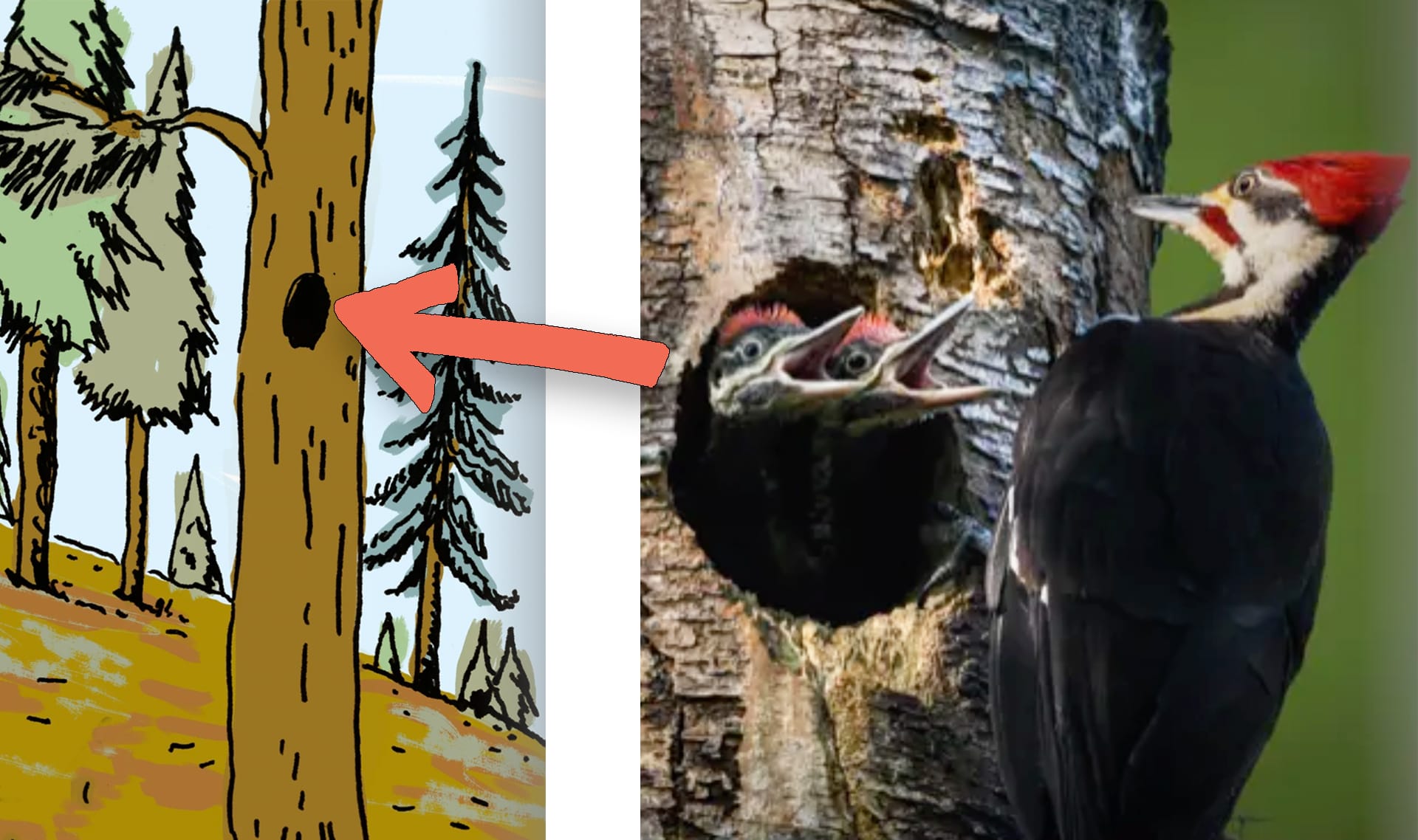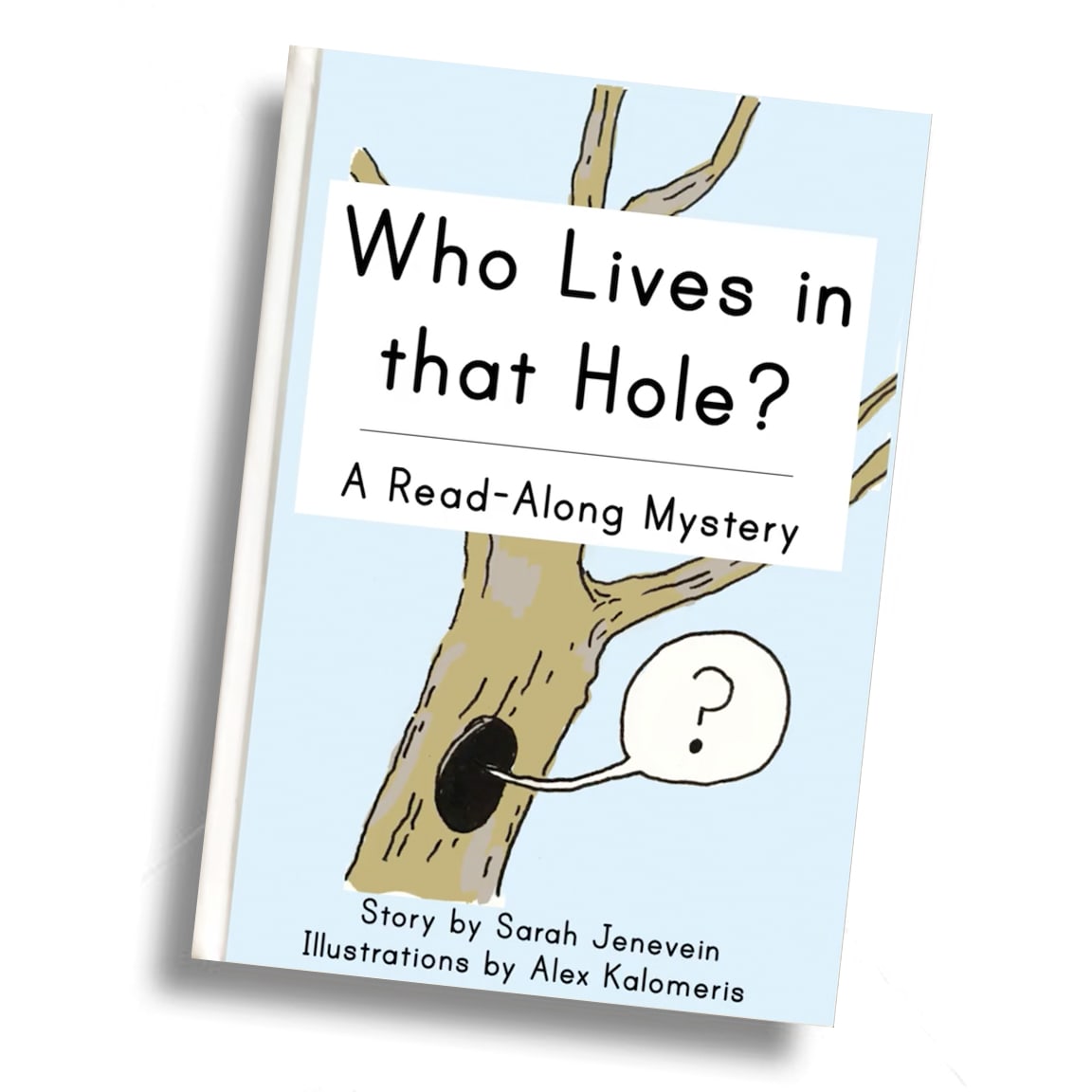
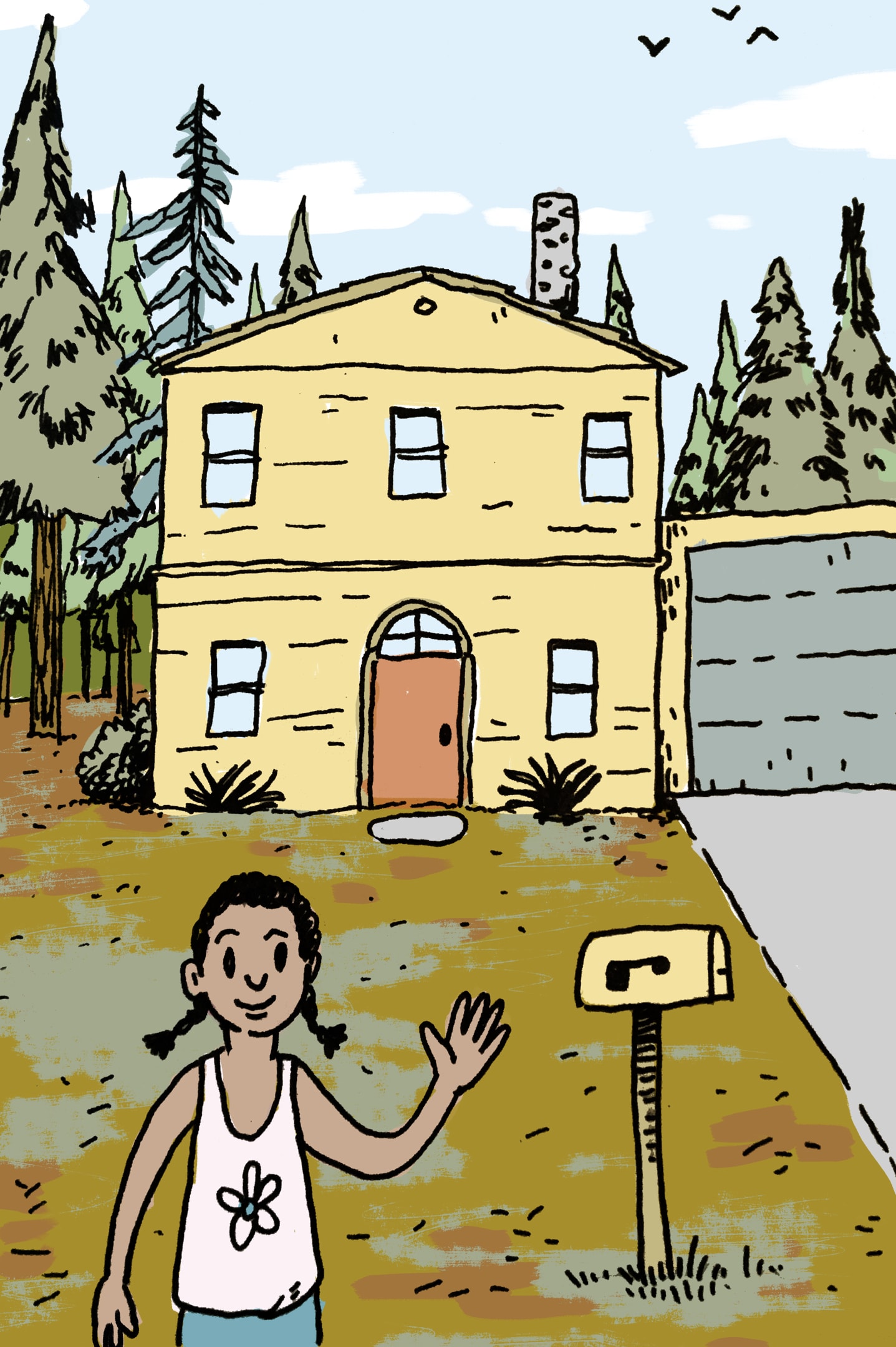
My name is Desiree.
I just moved into a new house with my dad.

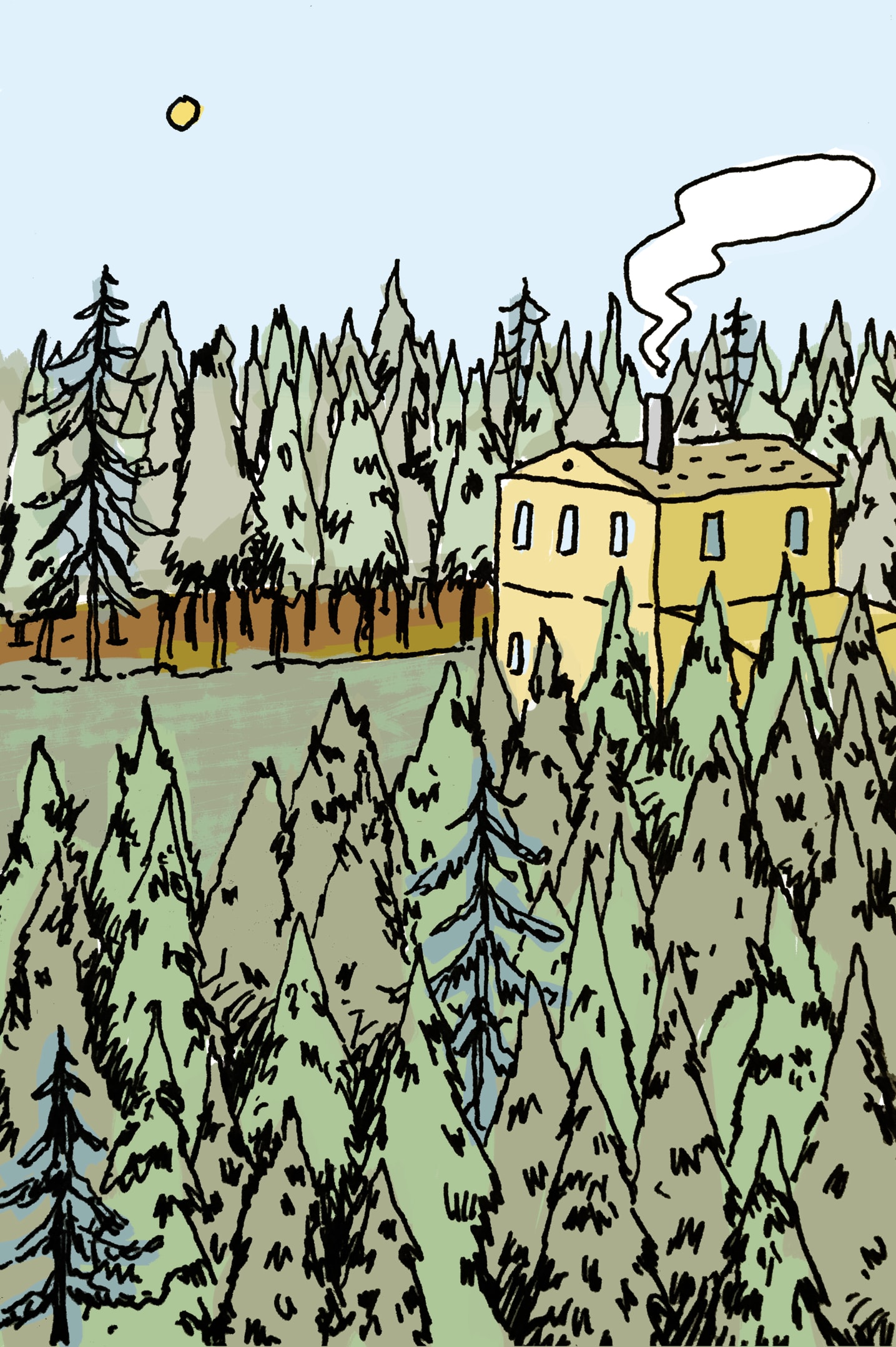
Our new house is in the forest.
There are a lot of trees!


Dad and I go for a walk.
I want to find animals in the forest!


Stop & Talk

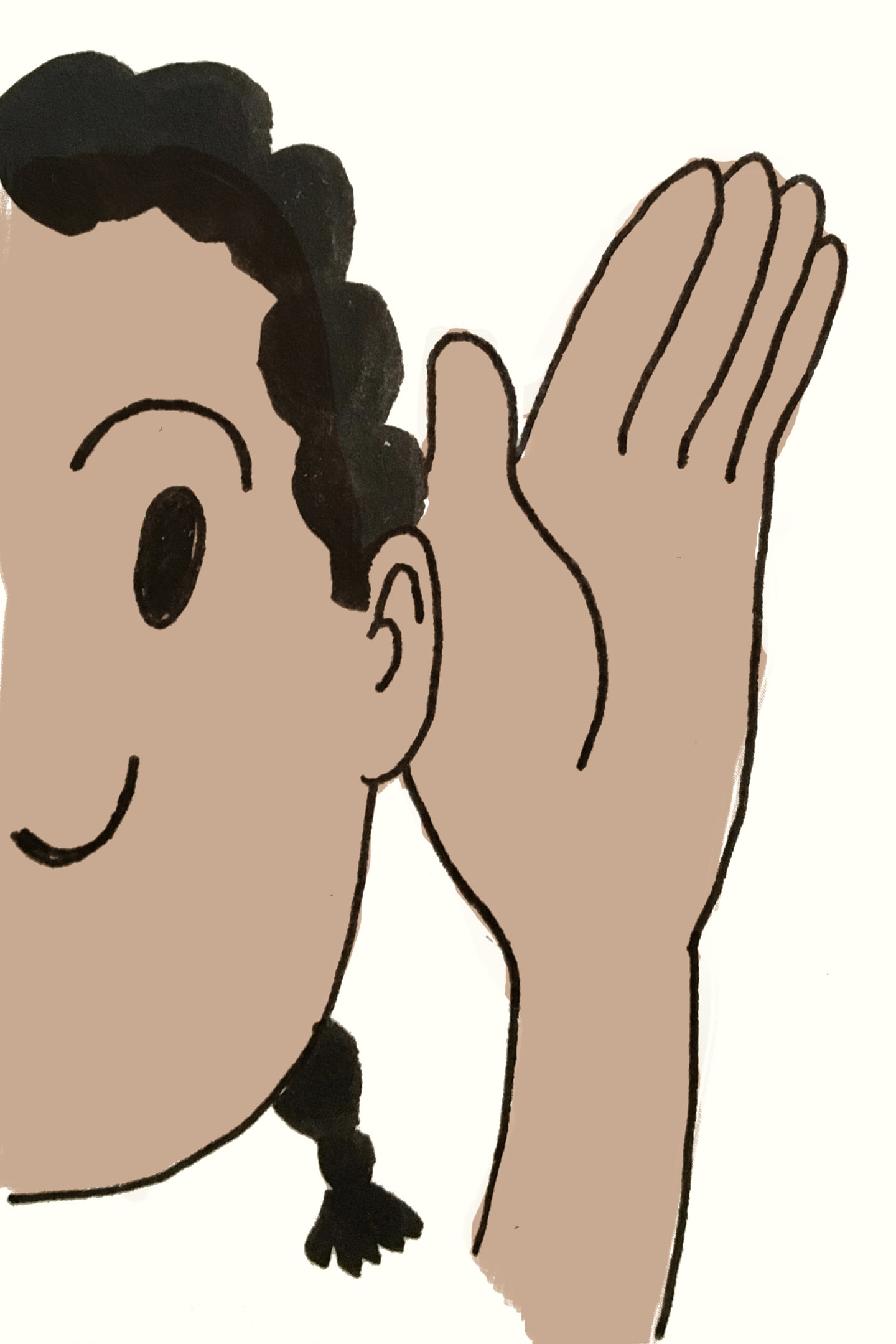
I listen carefully to all the sounds around me.
I hear loud sounds, like laughing and hammering!


I look at where the sound is coming from.
I see a bird!

The bird is hammering bark off the tree.
It makes a little hole.

“What kind of bird is that?” I ask Dad.
“It’s a woodpecker,” he says. “Why do you think it’s called that?”

Stop & Talk

I watch the woodpecker fly to a big hole and put its head inside.
I wonder what it’s doing.

It flies back to the small hole and hammers again.
It gets something in its beak.

Now I see! There are baby birds inside.
This hole is big enough for a whole nest.
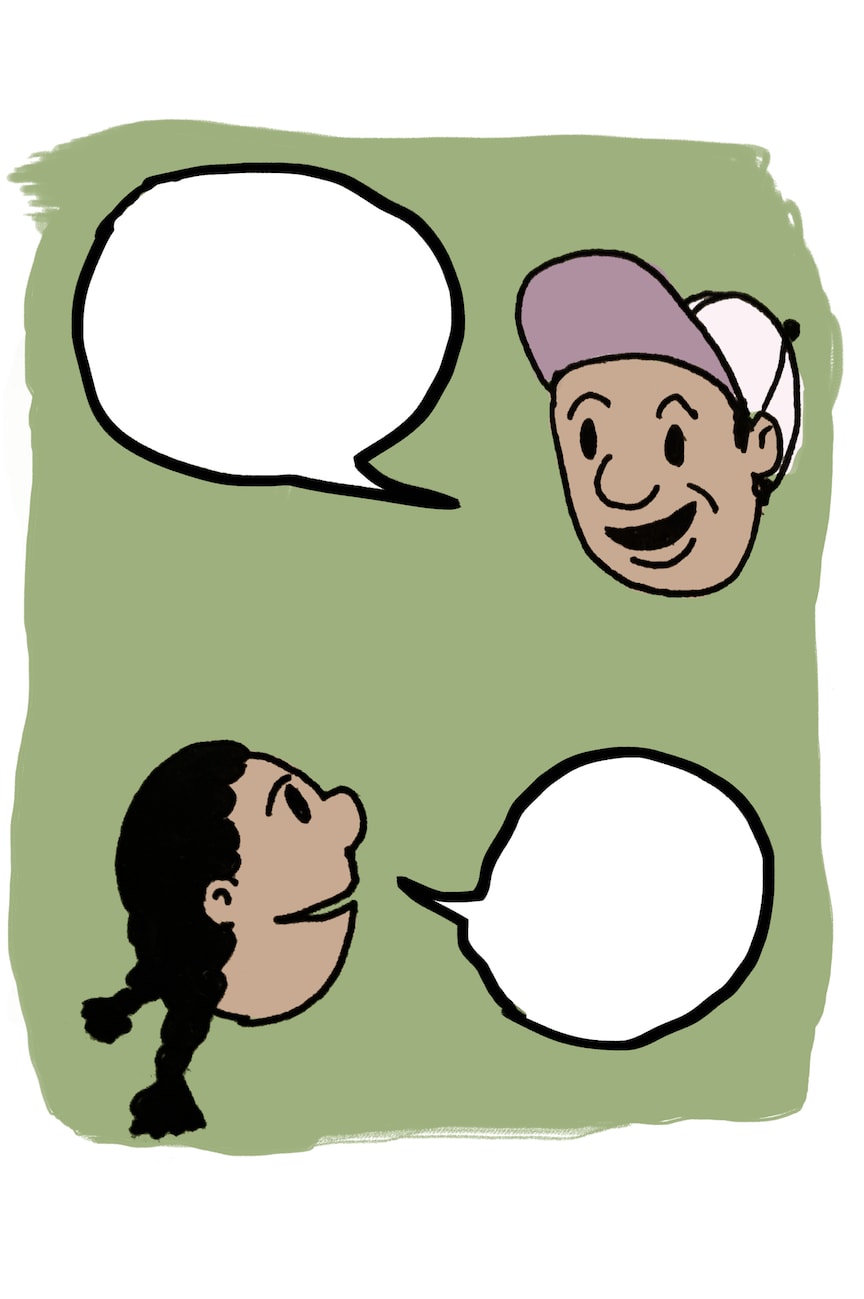
“I think I know what it’s doing!” I say.
“It gets worms out of the little holes it makes. Then it takes the worms to its babies in the big hole.”
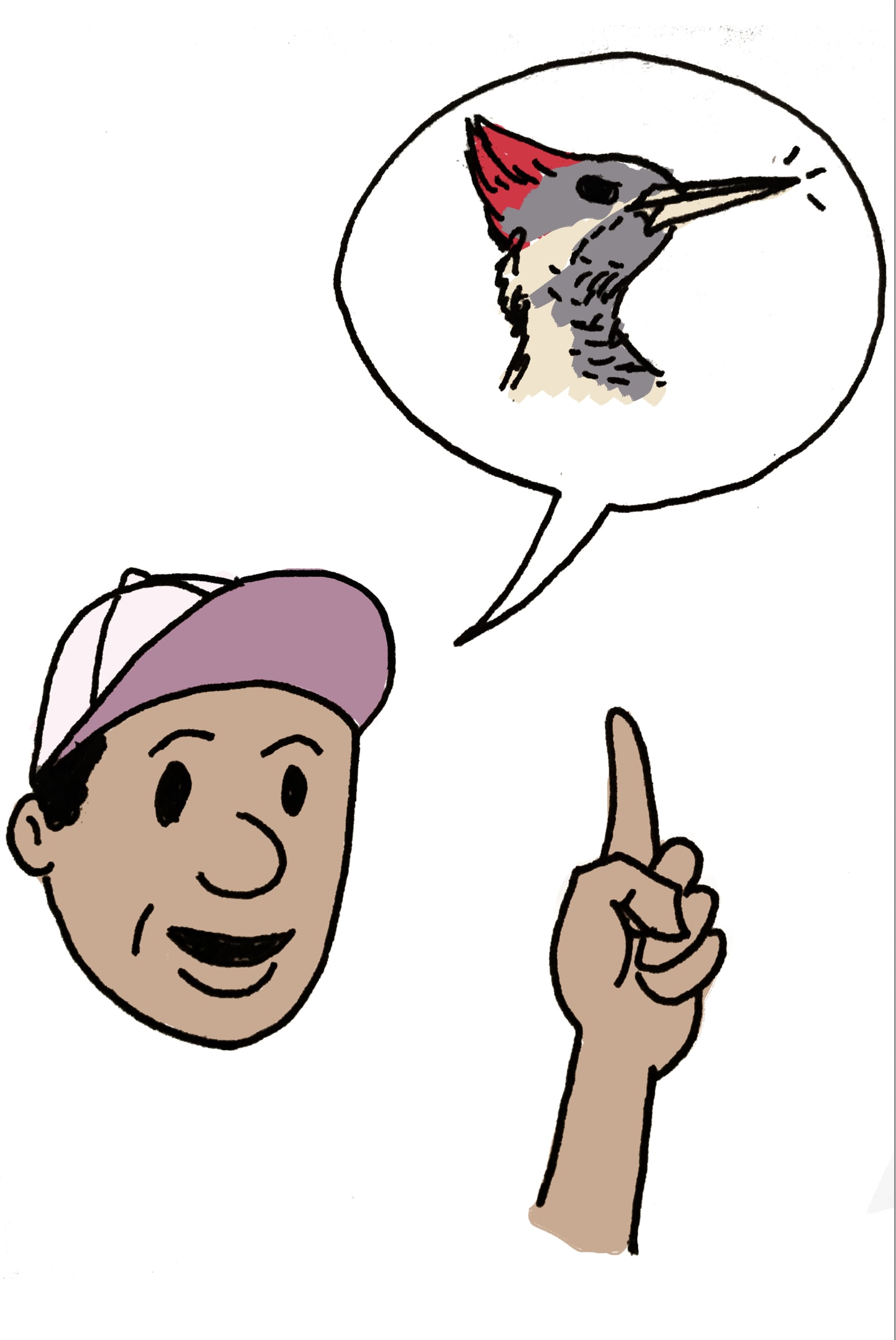
“Good thinking,” Dad says.
“Woodpeckers are great at making holes. They make little holes to find food, and big holes for their nests.”
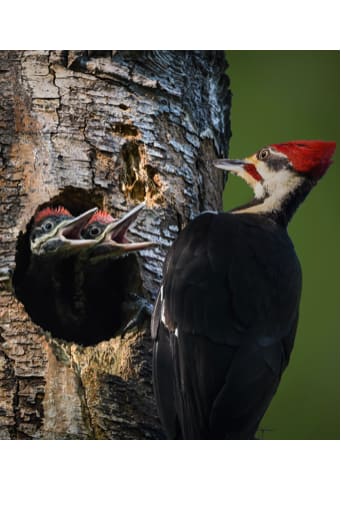

Get Up & Move!

“Look, there’s another hole in that tree! I wonder if a woodpecker lives there, too.”

I listen carefully, but I don’t hear a woodpecker pecking.
I hear a new noise.

Then I look closer.
I see a smaller bird.

The bird flies over to the hole.
It flies away, and then comes back again, just like the woodpecker did.

I look closely in the hole.
More baby birds!
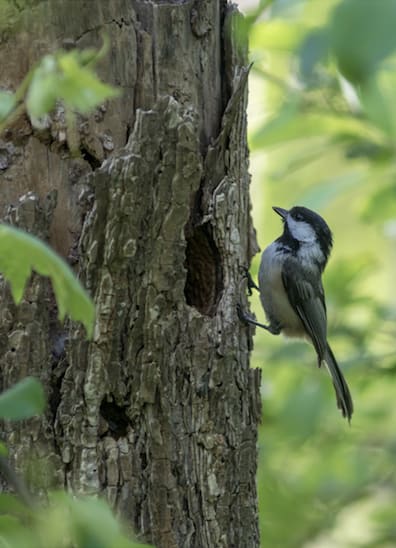
“How could a little bird like that make such a big hole?” I ask.
“Think about it,” Dad says. “Where could the hole have come from?”

Stop and Talk

“Maybe a woodpecker made the hole and then the little bird moved in,” I say.
“Good thinking,” says Dad.
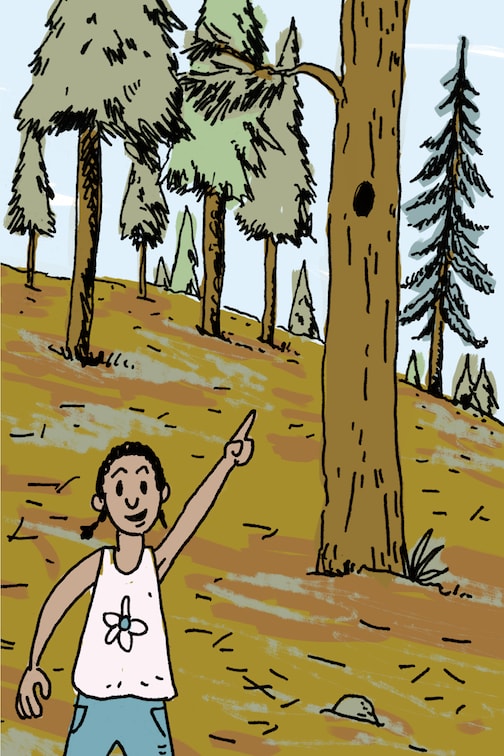
“Look, another woodpecker hole! I wonder who lives in that hole?”

I listen.
I don’t hear anything.

I look carefully.
I don’t see anything.
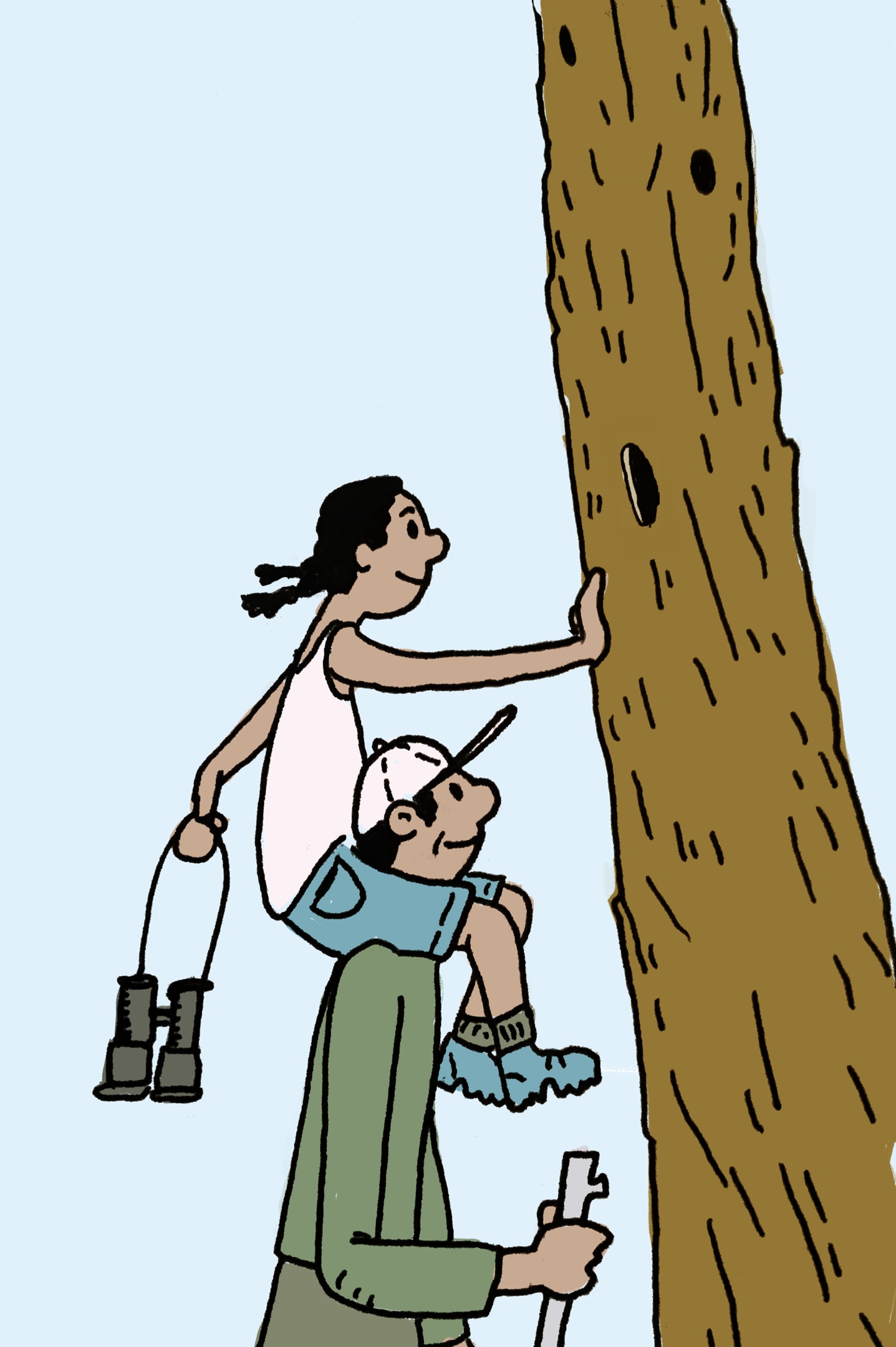
“Maybe nobody lives in that hole,” I say.
“There’s only one way to find out!” Dad says. He lifts me onto his shoulders.
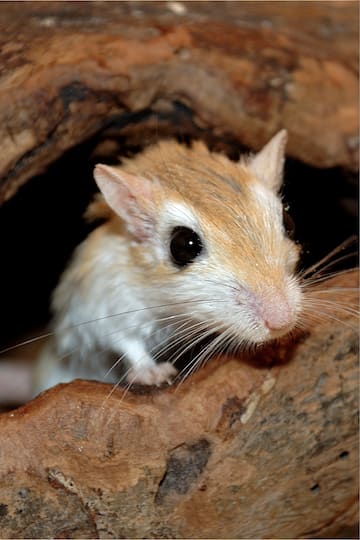
A tiny mouse scurries out of the hole!

“Wow! Birds aren’t the only animals that live in woodpecker holes!”
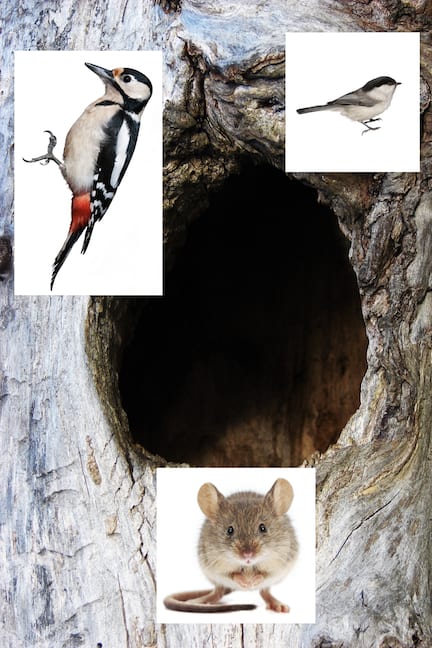
“That’s right,” Dad says. “Many birds and animals live in the holes that woodpeckers make.”

I think about all the animals living in woodpecker holes.
Big holes for big birds, and little holes for little mice.

“I wonder if I could help make homes for animals,” I say, “like the woodpecker does.”
Dad smiles. “I think you could.”
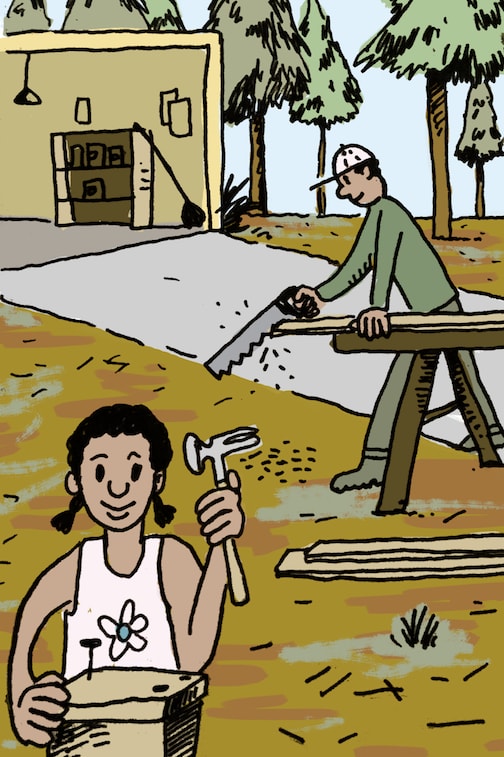
Dad and I get to work.
We saw and nail boards together until...
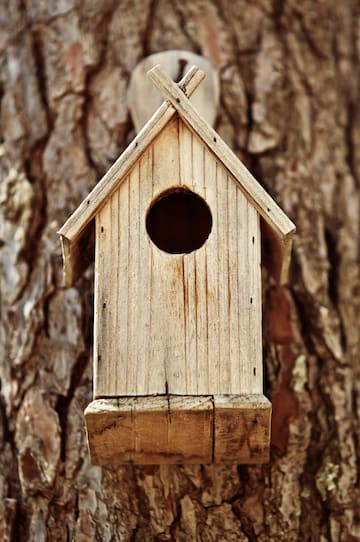
Our birdhouse is finished!
It has a hole just the right size for…
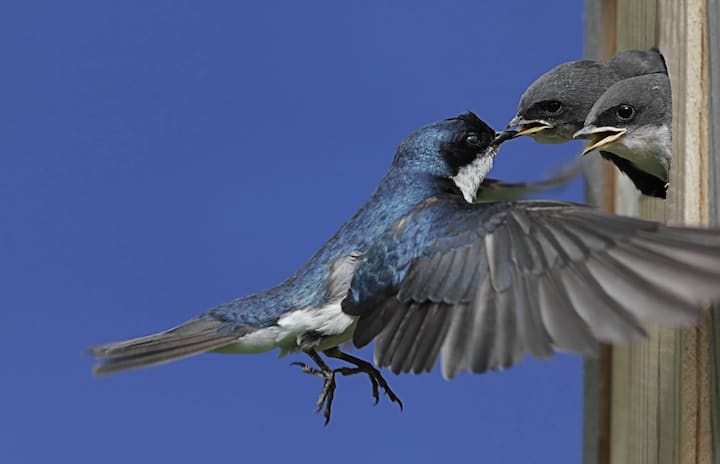
A whole family!
THE END
Your students can take a nature walk, just like Desiree did.
Take some time to sit quietly outside—in a park, on the playground, or wherever you might be able to see the animals that live in your neighborhood.
Have students watch for insects in the grass, birds in the trees, squirrels scurrying across their path. Make a list of the animals everyone sees.









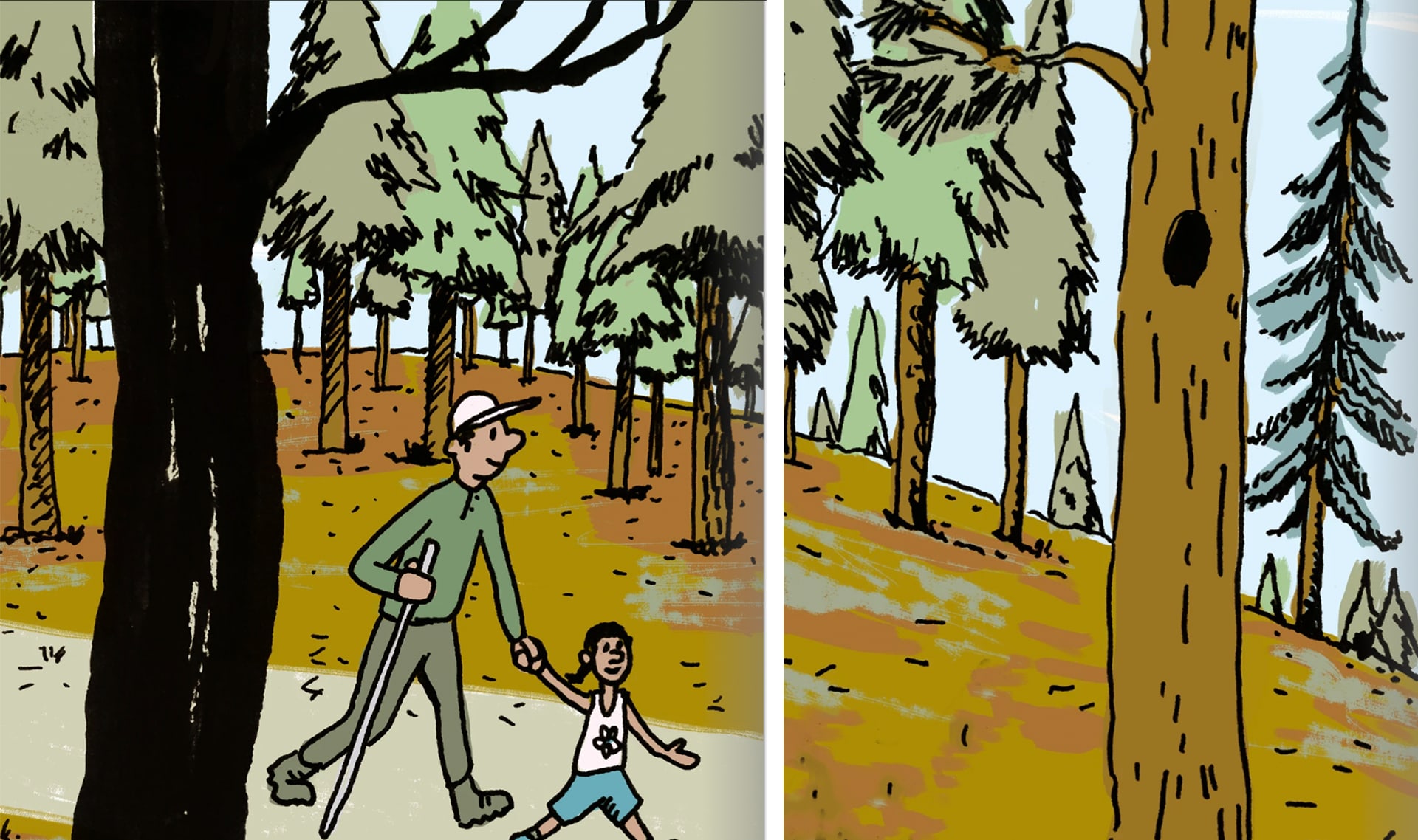
forest
